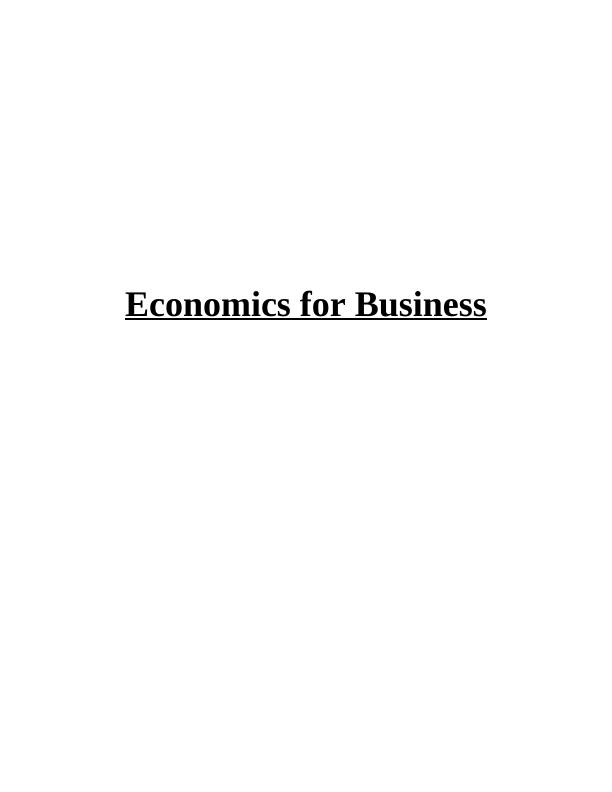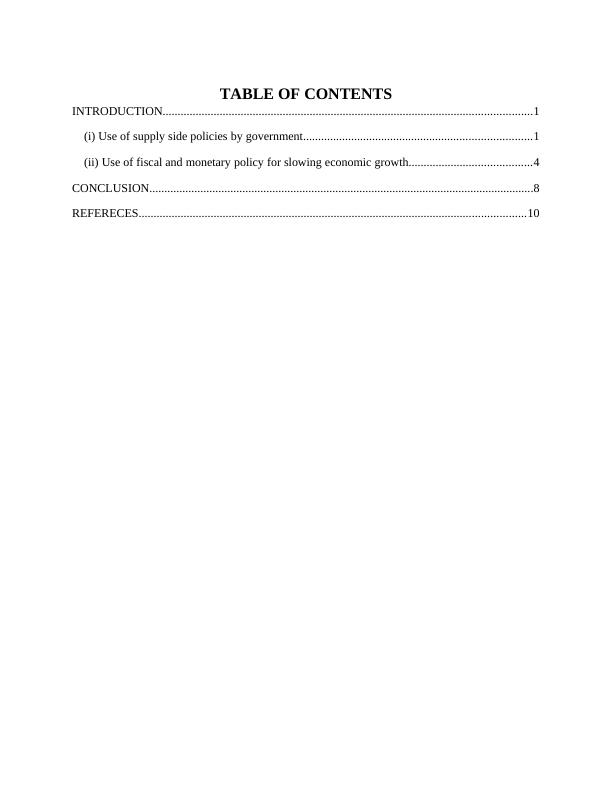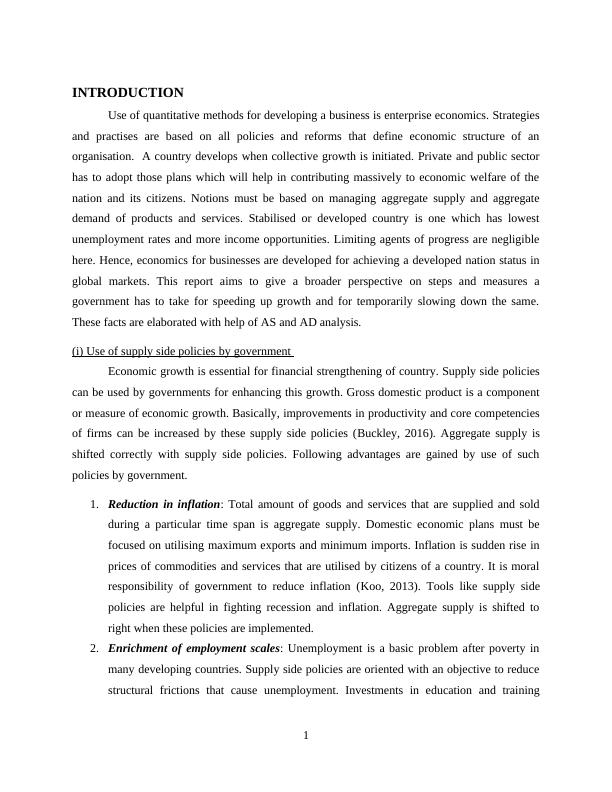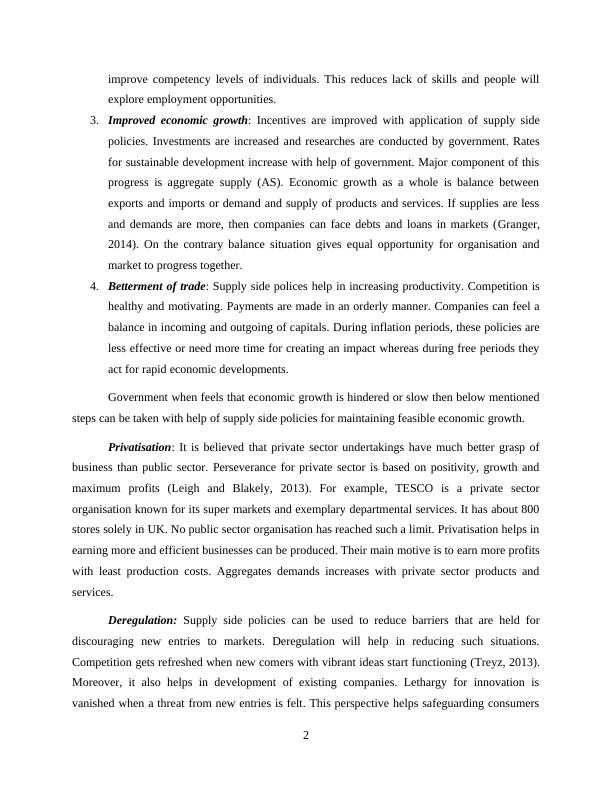Ask a question from expert
Enterprise Economics for Business
13 Pages3928 Words130 Views
Added on 2019-12-28
About This Document
Economics for Business TABLE OF CONTENTS INTRODUCTION 1 (i) Use of supply side policies by government 1 (ii) Use of fiscal and monetary policy for slowing economic growth 4 CONCLUSION 8 and REFERECES 10 INTRODUCTION Use of quantitative methods for developing a business is enterprise economics. Private and public sector has to adopt those plans which will help in contributing massively to economic welfare of the nation and its citizens. Notions must be based on managing aggregate supply and aggregate demand of products and services
Enterprise Economics for Business
Added on 2019-12-28
BookmarkShareRelated Documents
End of preview
Want to access all the pages? Upload your documents or become a member.
Business and the Economy of Nestle Essay
|12
|3771
|104
Business Economics Assignment
|11
|1310
|112
(Doc) Economic Growth in the UK
|15
|2985
|56
Introduction to Economics for Business
|14
|4043
|250
Keynesian and Neo-Classical Supply Side Policies for Long-Term Economic Growth
|16
|3296
|74
Impact of Low Wages on Economic Growth in Australia
|7
|1961
|78



